A Matchmaking Service for the Manufacturing Supply Chain

The NAM is a meeting place like no other, where manufacturers of all sizes and sectors gather to make the industry stronger. Recently, along with its partner CONNEX Marketplace, it invited manufacturing leaders to D.C. for high-level discussions about supply chain challenges.
The big picture: This meeting came at an exciting time for CONNEX. Formerly known as Manufacturers Marketplace, the program pivoted in 2022 to combine state-specific installations with the national platform and become a more powerful SaaS.
- Connecticut launched its own version of the CONNEX platform back in February, thanks to the support of the CBIA (a state business association and NAM partner) and the state’s chief manufacturing officer, Paul Lavoie—who discussed some early success stories at the D.C. event.
- “In the first two weeks, more than 200 companies joined, significantly more than the state’s most optimistic projections,” according to a Hartford Business Journal piece—and Lavoie told the paper he expects signups to blow past 750 in the first year.
- Meanwhile, Kentucky is also getting in on the action. The Kentucky Association of Manufacturers (also an NAM state partner) recently launched its own CONNEX Marketplace installation, which was announced by the governor. KAM CEO Frank Jemley also came to D.C. for the meeting, bringing his own success stories.
Talking the talk: The leaders in D.C. focused on how manufacturers can improve security and resiliency in the supply chain. They also discussed how local and state governments can ease supply chain challenges for businesses.
Security: As the participants observed, the key challenge is “illuminating risk” inside the supply chain, so that companies know what they’re facing.
- They discussed the many types of risks involved in supply chains, including cybersecurity, financial, business continuity, capacity and more.
- What’s next: CONNEX is working to integrate technology that will identify and highlight potential risks in a company’s specific supply chain.
Cooperation: The supply chain functions (or doesn’t) on the strength of manufacturers’ cooperation, from the largest companies to their smallest suppliers.
- Furthermore, competition is not company vs. company, but supply chain vs. supply chain, the participants agreed.
- Small manufacturers might benefit from a coach or guide to walk through the sourcing process so they understand how to remain resilient and competitive, one attendee recommended.
- What’s next: CONNEX is working on a playbook that entities such as manufacturing extension partnerships can use to help coach SMMs through the procurement process.
Progress: Executives from CONNEX reported more than 4,000 suppliers were connected to buyers in 2022, while the platform hosted 396 separate “postings” from manufacturers looking for specific parts or supplies.
The NAM will host another forum this fall where manufacturers will tackle supply chain issues. Contact NAM Senior Director of Member Business Services Anna Chongpinitchai for details.
G7 Not “Decoupling” From China

G7 leaders are focusing on “de-risking,” but not “decoupling” from China, they said in a joint statement covered by CNBC.
The details: “We are not decoupling or turning inwards,” the statement said. However, “we recognize that economic resilience requires de-risking and diversifying.”
- “We will seek to address the challenges posed by China’s non-market policies and practices, which distort the global economy,” the leaders continued. “We will counter malign practices, such as illegitimate technology transfer or data disclosure.”
Biden concurs: President Biden echoed these sentiments at a press conference on Sunday, emphasizing the need to “diversify” supply chains so that no one country has a monopoly on any essential product.
- “It means resisting economic coercion together and countering harmful practices that hurt our workers,” he continued. “It means protecting a narrow set of advanced technologies critical for our national security.”
In sum: “We stand prepared to build constructive and stable relations with China, recognizing the importance of engaging candidly with and expressing our concerns directly to China. We act in our national interest,” the G7 statement said.
NAM in action: As exemplified by its recent Competing to Win Tour in Europe, the NAM is working to bring business and government leaders together to strengthen the resilience of manufacturers in the United States and our democratic allies in the face of greater uncertainty with respect to China.
The last word: “Manufacturers have consistently called for a rethink of the U.S.–China relationship to boost competitiveness globally,” says NAM Vice President of International Economic Affairs Ken Monahan.
- “The strategy requires collaborating with allies for supply chain resilience, addressing discriminatory Chinese policies and creating trade openings through robust agreements. Yesterday’s announcement highlights the path ahead.”
Chart’s Jillian Evanko on the Adventure of Manufacturing Jobs
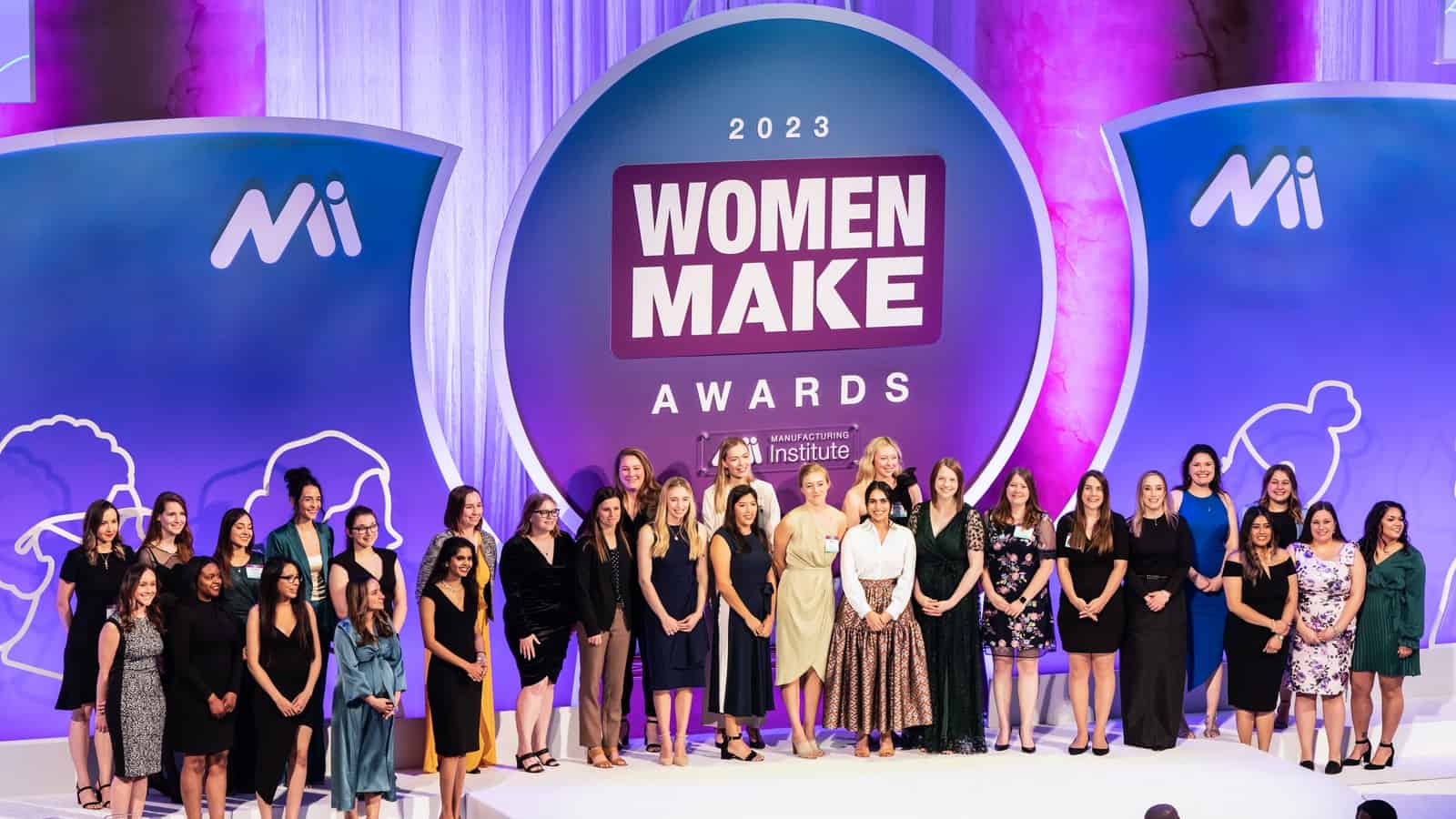
If you’re looking for a career with no “typical days,” Jillian Evanko would advise you to choose manufacturing.
Mixing it up: Every workday offers something new and exciting for Evanko, the president and CEO of Chart Industries, a global leader in the design, engineering and manufacture of process technologies and equipment for the clean energy and industrial gas markets.
- “Whether I have a customer meeting, an investor conference, a keynote speaking event, a panel session or meetings with my executive team, every single day looks different to me, which is what I love about my job,” said Evanko.
Business sense: It was a talent for business that led Evanko—a 2023 honoree of the Manufacturing Institute’s Women MAKE Awards, which recognize outstanding female talent in the manufacturing sector—to the industry.
- “Early in my career I worked for Honeywell and Dover Corporation in various financial and operational roles,” said Evanko, who holds a Master of Business Administration from the University of Notre Dame.
- Once she entered the field, she found that she genuinely enjoyed it—and she’s here to stay. “The fast-moving, exciting nature of the manufacturing industry is what keeps me in it,” she said. “There is always an opportunity to innovate or make a technological development, and you really get to see the impact of what you produce making a difference in everyday life.”
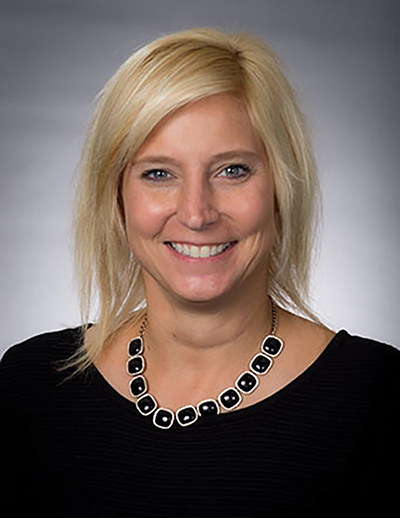
A changing industry: Evanko has seen manufacturing evolve for the better since she got her start, especially for women employees.
- “In the past few years, I think the world has come to recognize that there is a direct correlation between diversity in manufacturing and increased innovation,” she said. “By diversifying a workforce, you gain access to new thoughts, ideas and perspectives.”
- “Since I’ve begun my career, I have seen more women enter the manufacturing industry, and even within my past five years at Chart, we are continuing to see more women taking on more senior roles, including operations and manufacturing roles.”
Growing company: In recent months, Evanko has been even busier than usual, as Chart Industries recently completed its acquisition of Howden, an air- and gas-handling products manufacturer and services provider.
- The acquisition, Chart’s largest to date, has doubled the size of the company’s engineering team. It “helps us expand into new geographies and gain access to new customers, and it provides us with a much more expansive Nexus of Clean™ offering,” she said, referring to the firm’s array of products and solutions for a more sustainable future.
The best, period: Evanko devotes much of her time to helping and educating others. One example of this is the way she provides her daughter’s Girl Scout troop with access to entrepreneurial speakers, as well as information about the world of manufacturing. She has developed a mantra that keeps her constantly striving for improvement:
- “I like to say that I don’t want to be the best female CEO, I want to be the best CEO,” she said. “For women in manufacturing looking to grow in their careers, aim to be the best you can be despite gender, age or background.”
- “Be confident in what you bring to the table and never underestimate your abilities,” she continued. “Listen to others and empower them to bring their ideas forward. And never underestimate the power of simply being kind.”
How ALOM Triumphs in a Tight Labor Market
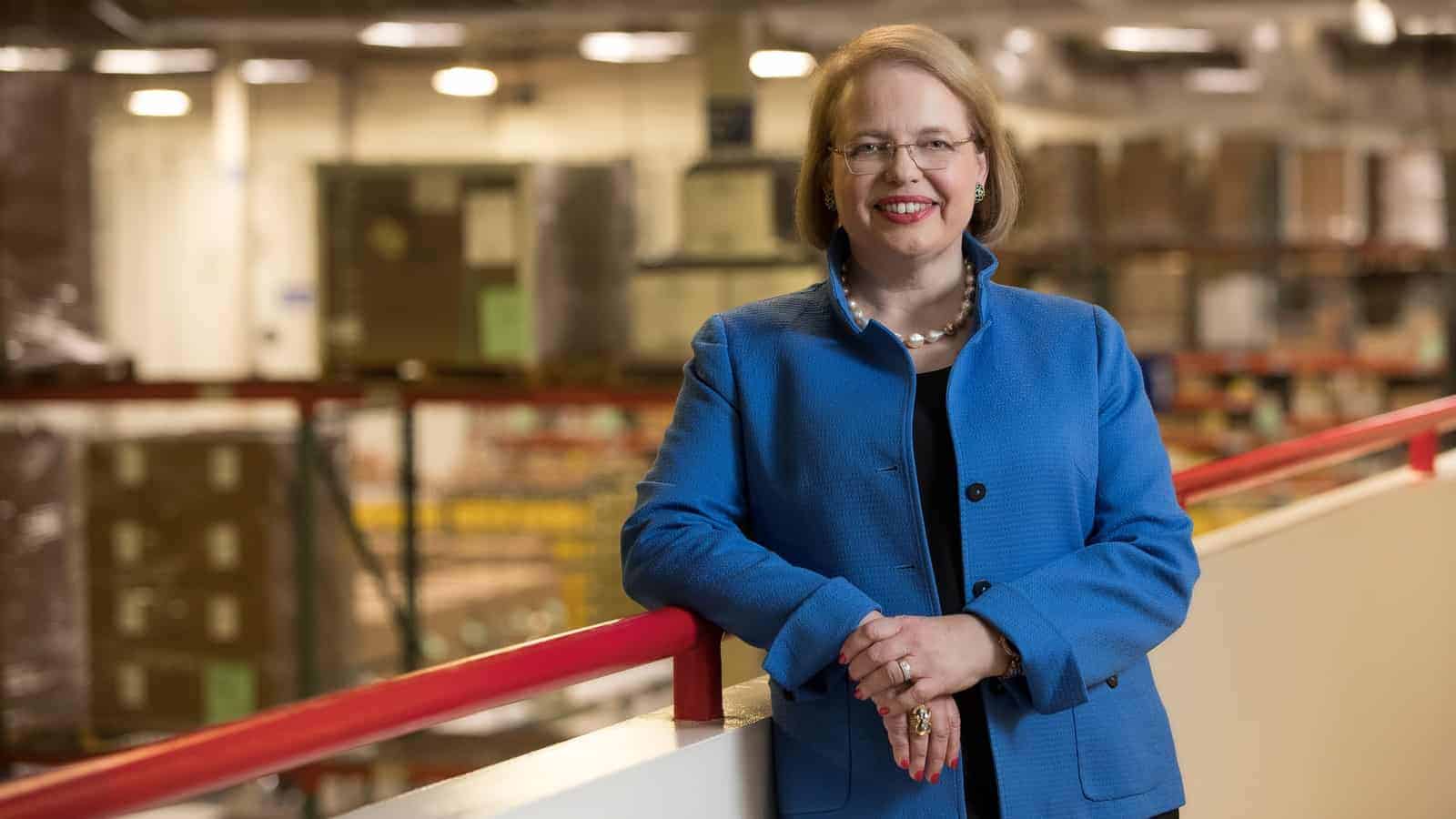
How can manufacturers recruit and retain employees amid a skills gap that leaves hundreds of thousands of manufacturing jobs unfilled every month? ALOM Technologies Corporation—a global supply chain management services and solutions provider based in Fremont, California—has an answer: focus aggressively on company culture.
The results are in and ALOM’s program is a remarkable success, leading to workforce and revenue growth for the company over the past few years. This achievement led ALOM to be named a finalist for the Manufacturing Leadership Awards, given every year by the Manufacturing Leadership Council (the NAM’s digital transformation division). Here’s a sneak peek into how they did it.
The program: After being named an essential business in 2020 due to its medical supply chain infrastructure, ALOM turbocharged its existing culture program, called DOING—which stands for Development, Opportunity, INclusion and Growth—to support staff recruitment and retention in a challenging labor market.
- The program had existed since 2018 and was based on ALOM’s longstanding cultivation of values-driven purpose. When the company expanded it during the pandemic, it enabled ALOM to build a higher performing team across multiple locations.
The details: ALOM has employed several strategies for reinforcing its cultural values, aiming to instill a sense of purpose and belonging in job candidates and veteran staff alike. These include:
- Showcasing their commitment to diversity, inclusion and sustainability both inside the organization and in recruitment efforts;
- Redefining the ALOM People Team mission and structure to emphasize staff development over compliance;
- Working to address employee wellness through stress and mental health education and resources; and
- Instituting a staff development online portal called ALOM University that empowers rapid onboarding, training and advancement.
The results: The program has been an extraordinary success, helping to increase ALOM’s workforce and strengthen the company’s bottom line at the same time. In 2021 alone, the company achieved:
- 70% workforce growth;
- 60% revenue growth;
- A 6% decrease in employee attrition for 2021, as compared to 2018; and
- A 65% reduction in recruitment days to fill open positions.
Looking ahead: ALOM isn’t done yet. This year, the company is working on a digital transformation effort, called DOING DX, designed to make all of ALOM’s tech systems and business processes more efficient and effective.
- It will focus on staff recruiting, performance management, supplier management and evaluation, team building, mentoring and much more.
The last word: “When I started ALOM 26 years ago, I was determined to build a supply chain company that did right by everyone,” said President and CEO Hannah Kain.
- “This has become the foundation of ALOM’s corporate culture. We believe in using the supply chain to help the world be a better place—for the environment and for every person, supplier and company. Experiencing our values in action instills a sense of pride and belonging in our staff that helps us attract, build and retain an exceptionally talented team.”
Get involved: Want to learn more about this successful workforce effort, as well as a whole host of other innovations by leading manufacturers? Join the MLC for its Rethink summit in Marco Island, Florida, on June 26–28. Sign up here.
NAM Creates Cybersecurity Brain Trust

As manufacturers confront an ever-expanding list of cybersecurity threats, the NAM is mustering the leading cybersecurity minds in the sector to fight back. Since March 2021, it has been gathering chief information security officers from a large range of companies to discuss their shared challenges and the strategies that have worked against them.
Recently, a group of these cyber leaders met at the NAM’s D.C. headquarters to exchange their latest updates. Here is a sneak peek inside this meeting, where the future of the industry’s cyber defenses was being shaped.
On the agenda: The discussion covered both IT and OT technology and the interdependence between the two that requires a careful but not restrictive cyber strategy.
- Beyond the technology itself, the CISOs also detailed how they present their progress to their boards, including their metrics for success.
Zeroing in: Cyber training for employees was a particular focus for the group, as manufacturers work to educate their workforces about these threats.
- Though most cyber training is directed at IT personnel, there are more and more plant floor workers who also use computers and must receive security training, the CISOs noted.
- It is best to embed training into the overall asset care process, recommended one leader, so it becomes a long-term priority.
- In addition, role-based training ensures all bases are covered, including contractors, according to another CISO.
Guest speaker: The meeting also featured an appearance from a congressional adviser on cybersecurity, who detailed what policymakers are planning.
- Emily Burdick, professional staff member to the majority on the House Homeland Security Subcommittee on Cybersecurity and Infrastructure Protection, explained how the subcommittee is working to oversee the Cybersecurity and Infrastructure Security Agency’s two roles: overseeing critical infrastructure and monitoring federal networks.
Government priorities: Congress is focusing on four key priorities for the year, Burdick said. These include:
- Monitoring CISA’s soon-to-be-proposed rule on cyber-incident reporting (on track for a Notice of Proposed Rulemaking in March 2024, with the final rule expected by September 2025); this proposed rule would require covered entities to report cyber incidents within 72 hours and needs clarification around “covered entities” and the timing of incident reporting;
- Measuring CISA’s effectiveness as a sector risk management agency and as the national risk coordinator;
- Improving private-sector partnerships through the Joint Cyber Defense Collaborative and other processes; and
- Strengthening the national cyber workforce.
What they’re saying: The CISOs in attendance told the NAM how much they valued these high-level discussions.
- “While we often cross paths with fellow CISOs at trade shows and other industry events, it is important for us to gather in small groups and share what we are experiencing in an intimate, off-the-record setting so we can speak openly and honestly about challenges and potential solutions,” said Beth Schulte, CISO of Louisiana-Pacific Corporation.
- “I was able to share some tips with the other CISOs based on my experience and came away with tangible actions and takeaways to both implement immediately and research further after hearing recommendations from peers,” she continued.
Get involved: The NAM’s CISO group is working on industry benchmarks that will be shared with other manufacturers, so the industry can raise its defenses across the board. These benchmarks will help other CISOs evaluate their own practices and keep their boards and executives informed about industry standards.
- If you’d like to weigh in on your company’s activities, please take the short survey here.
Students Build the Future in Ohio
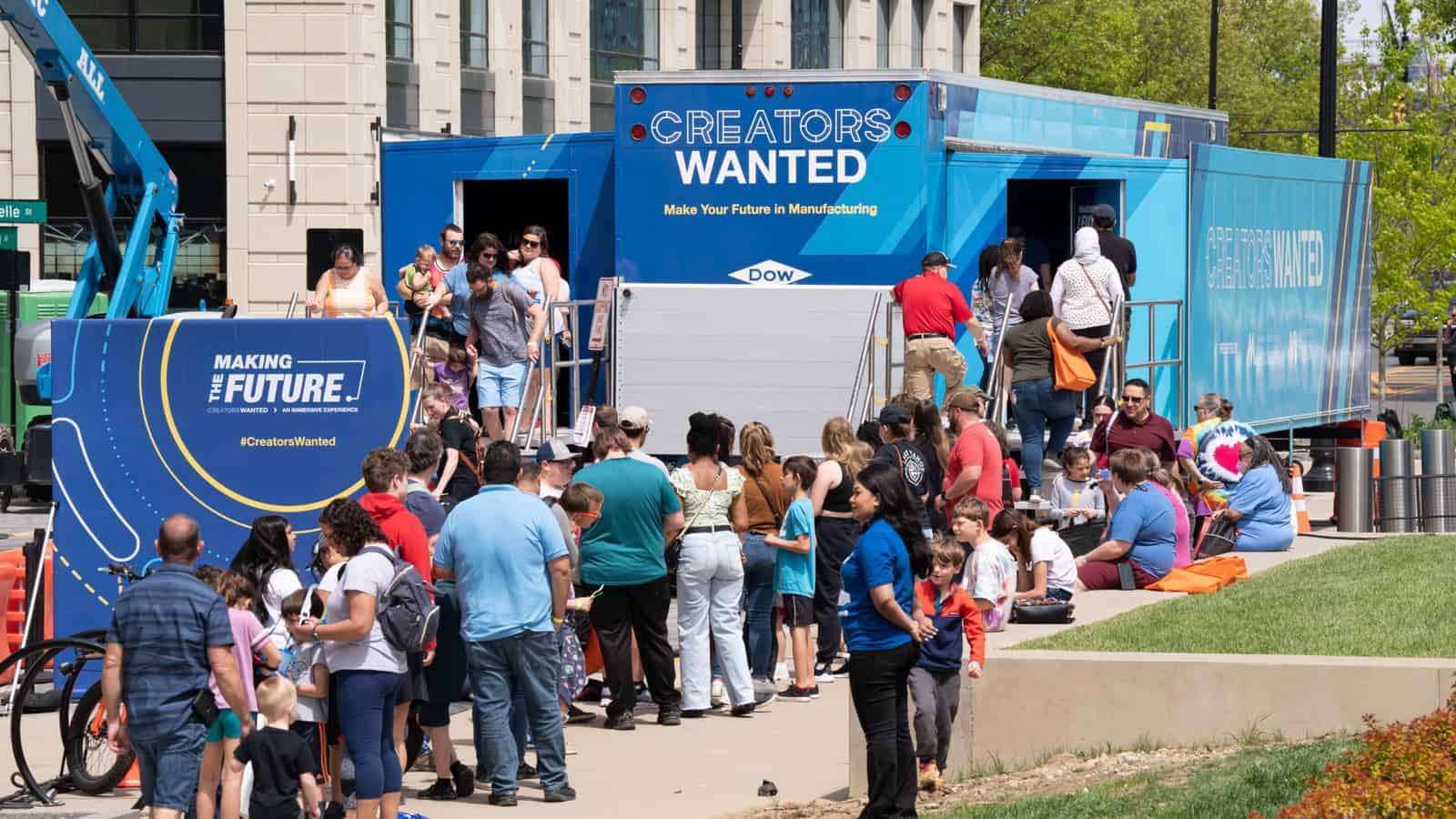
Where can you “race to the future” in a mobile, immersive manufacturing experience, try your hand at cutting-edge technology and get free career advice from top professionals? At a Creators Wanted stop, of course.
Participants at last week’s Creators Wanted stops in Marysville and Columbus, Ohio, did all this and more.
Two stops, one week: The Honda Heritage Center was the site of two days of educational fun last Wednesday and Thursday, after which the Creators Wanted Tour continued on to the COSI Science Festival in Columbus, Ohio’s largest STEM event, on Saturday.
- The stops were the 15th and 16th, respectively, on Creators Wanted’s nationwide tour, an initiative of the NAM and its 501(c)3 workforce development and education affiliate, the Manufacturing Institute.
- The tour aims to shore up the manufacturing workforce by 600,000 workers, increase the number of students enrolling in technical and vocational schools or reskilling programs by 25% and boost the positive perception of the industry among parents from 27% to 50%—all by 2025.
- Nearly 1,000 kids and adults came through the Creators Wanted immersive experience during its three days in Ohio, and 35,000 students and career mentors signed up to learn more about modern manufacturing careers, increasing the network to 1.2 million nationwide.
Sites to behold: More than 300 students from central Ohio schools toured the Honda Heritage Center on Wednesday and Thursday.
- Students learned about the American Honda Motor Company’s rich history of innovation, beginning in 1959, and toured the Honda Technical Development Center, where Honda associates advance their skills in high-tech manufacturing.
- Tour sponsor FactoryFix was on hand, too, helping students explore pathways to manufacturing careers through information handouts and in-person Q&As with company representatives.
Theme-park lines: At COSI, the Creators Wanted experience had the festival buzzing, with attendees lining up to take their turn. More than 675 kids and adults moved through the unit in just six hours.
- “We built this experience to excite future creators and their career mentors like parents,” said NAM Managing Vice President of Brand Strategy Chrys Kefalas, who was onsite with the tour. “I’m not sure anyone fully anticipated how much of an attraction we’d be with the immersive experience—it’s a huge draw.”
A big commitment: Tour-stop host Honda—which has been instrumental in the launch and continuation of Creators Wanted—announced that it will increase its overall commitment to the Creators Wanted campaign to $2.25 million through 2025.
- “Creators Wanted is a great opportunity to showcase what the modern manufacturing environment is like and what the career opportunities are,” said American Honda Motor Company Executive Vice President Bob Nelson. “And there are many career opportunities for everyone.”
- “Honda’s incredible support and leadership has empowered our innovative campaign to thrive—to inspire students, to positively affect parents and teachers and, now with Creators Connect, to change even more lives,” said NAM President and CEO and MI Chairman of the Board Jay Timmons.
- Sara Tracey, managing director of workforce services for the Ohio Manufacturers’ Association, which participated in the events, added, “There are so many opportunities [in manufacturing] for people, regardless of what their interests are.”
“Build the future”: At both the Honda Heritage Center and COSI, there was plenty for participants to do as well as see.
- Students, parents and other attendees from local communities got the chance to use some of the latest items produced by manufacturers. These included Honda’s virtual-reality paint simulator and Honda’s safety car interactive display, as well as the many hands-on manufacturing challenges in the Creators Wanted mobile experience.
- “Know that there is a place for you in manufacturing to put whatever your skills and interests and passions are to work to build the future,” said MI President and Executive Director Carolyn Lee.
A great place to work: Many Honda associates—eager to share their positive experiences—participated in the week’s events, too, and had great things to say about modern manufacturing careers while on the ground at COSI.
- “I don’t think people realize how complex a vehicle is,” said one participating Honda associate. “The work and the people behind it, and the effort it takes to bring it to market—I can’t express how much fun that really is.”
- Said another, “I like that every day is a little bit different.”
Behind the scenes: Interested in seeing how the Creators Wanted activation at COSI unfolded? Check out the NAM’s Instagram story from this weekend here.
How Toyota Shares Its Culture with Other Manufacturers
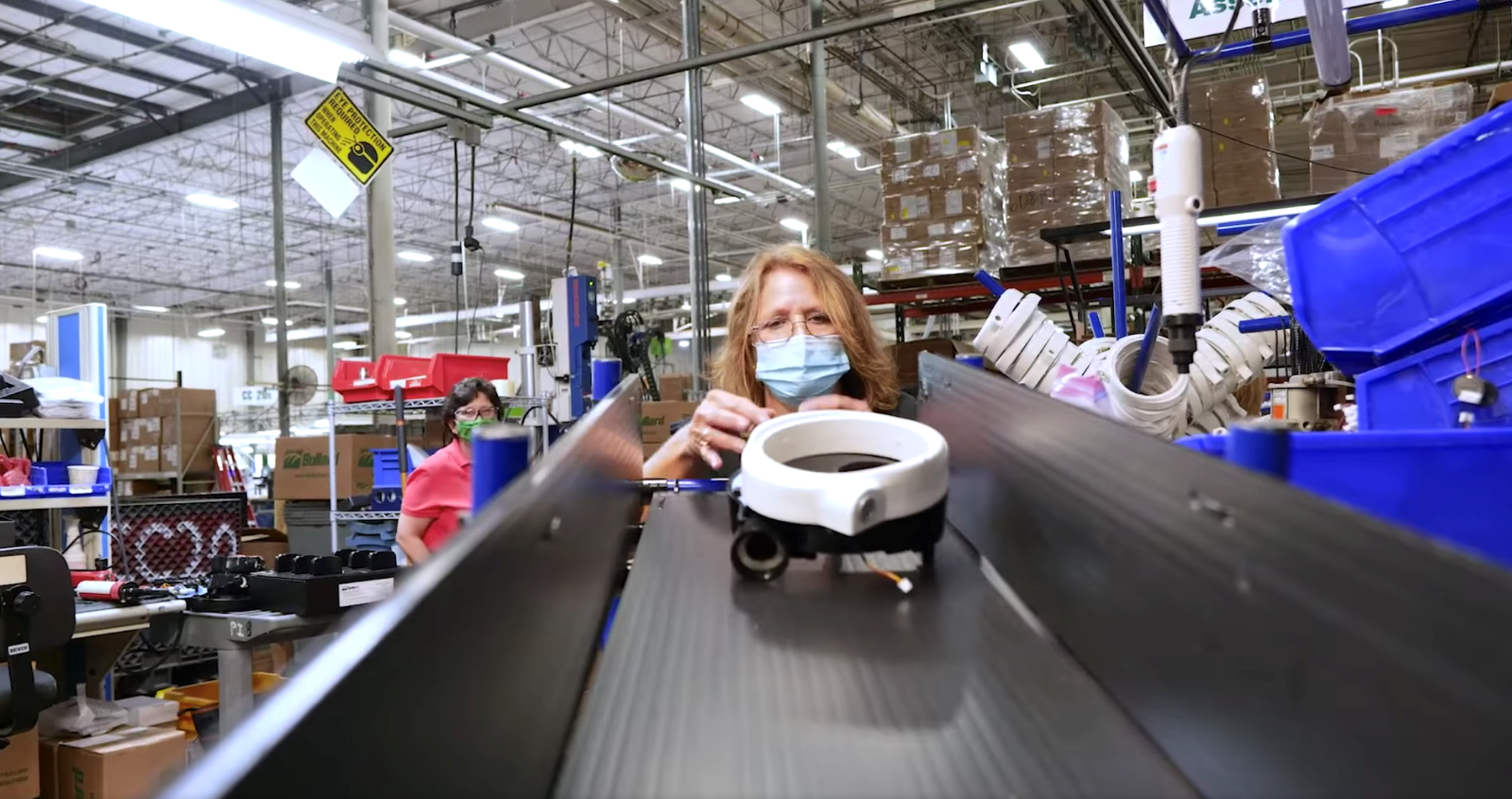
Why would a company give away its “secret sauce” recipe for success? In Toyota’s case, the answer’s easy: because it’s the right thing to do, according to Jamie Bonini, president of the Toyota Production System Support Center, Inc.
How it all began: The TSSC, which last year celebrated its 30th anniversary, is a nonprofit organization founded by the auto manufacturer in 1992 to help other companies improve their manufacturing processes using the proprietary Toyota Production System.
- “In the early ’90s, companies would come visit our factory in Georgetown, Kentucky, for tours and asked, ‘How do you [manufacture] in the U.S. competitively?’ We said, ‘It’s TPS.’”
- TPS is Toyota’s lean-manufacturing system, based on the Japanese philosophies of jidoka (which can be roughly translated as “automation with a human touch”) and “Just-in-Time,” which refers to producing “only what is needed for the next process in a continuous flow.”
- Toyota said yes to the growing number of requests from outside the company to share TPS principles, and soon developed an entire center devoted to TPS teaching.
The substance: TSSC, which is subsidized by Toyota, provides companies with the training needed to implement TPS principles, which help boost efficiency, product quality and workplace safety—while reducing costs and lead times.
- “TPS emphasizes the elimination of waste, continuous improvement and respect for people,” Bonini said.
The meaning of lean: TSSC has many long-term clients, some of which have been with the nonprofit for most of its three decades. The reason: TPS isn’t a one-and-done, single-size system that can be superimposed on all organizations the same way, Bonini said.
- “‘Lean’ has come to mean different things to different people,” he continued. “But this is what we mean by a Toyota production system: an organization-wide culture of highly engaged people who are solving problems and innovating to drive performance.”
- “When we work with a company, [our solution is] customized; it’s highly situational. What we’re trying to build in an organization is a culture. And to build it, it has to be nurtured, fortified. That’s why we like these longer-term engagements.”
Who’s involved: TSSC has worked with a wide range of companies in many industries, as well as with nonprofits and even governments. This year, the TSSC is working with approximately 50 companies and organizations, about 30 of which are nonprofits.
- The nonprofits are not charged for the consultations. “It’s completely free for them, but they have got to put a lot of hard work into it,” Bonini said.
- Meanwhile, the companies are charged a fee that doesn’t cover all of Toyota’s costs. Toyota donates its time, labor and transportation expenditures, according to Bonini.
The working relationship: Given the bespoke nature of TSSC’s consultations with companies, the work varies from client to client. It may consist of monthly visits, onsite consulting for specific projects or regular remote check-ins and discussions.
- Whatever the client needs from TPS, it requires the TSSC team’s touch. “We have worked with companies that have studied lean manufacturing for many years, and six or nine months in, they’ll say, ‘Wow, Jamie, TPS is very different from what I read.’ You really need to experience it. It’s like learning to swim or ride a bicycle,” said Bonini.
Future plans: TSSC isn’t slowing down after 30 years. It recently began hosting TPS-focused Toyota plant tours, and it has big plans for them.
- It offers half-day tours, because “we want to make TPS very understandable in a short time,” Bonini said. However, TSSC is “also likely to develop an enhanced, two-day tour. On the second day, [tour participants] would talk to us about their particular business and structure and get tailored advice.”
The last word: “A lot of companies look at lean operations as installing a collection of tools: visual management, daily huddles,” Bonini said. “In fact, the tools are part of the system, not the system. Our goal is to help companies understand that the really important thing is the tool users.”
Pies, Games and Donations: How Pella Engages Employees on DE&I
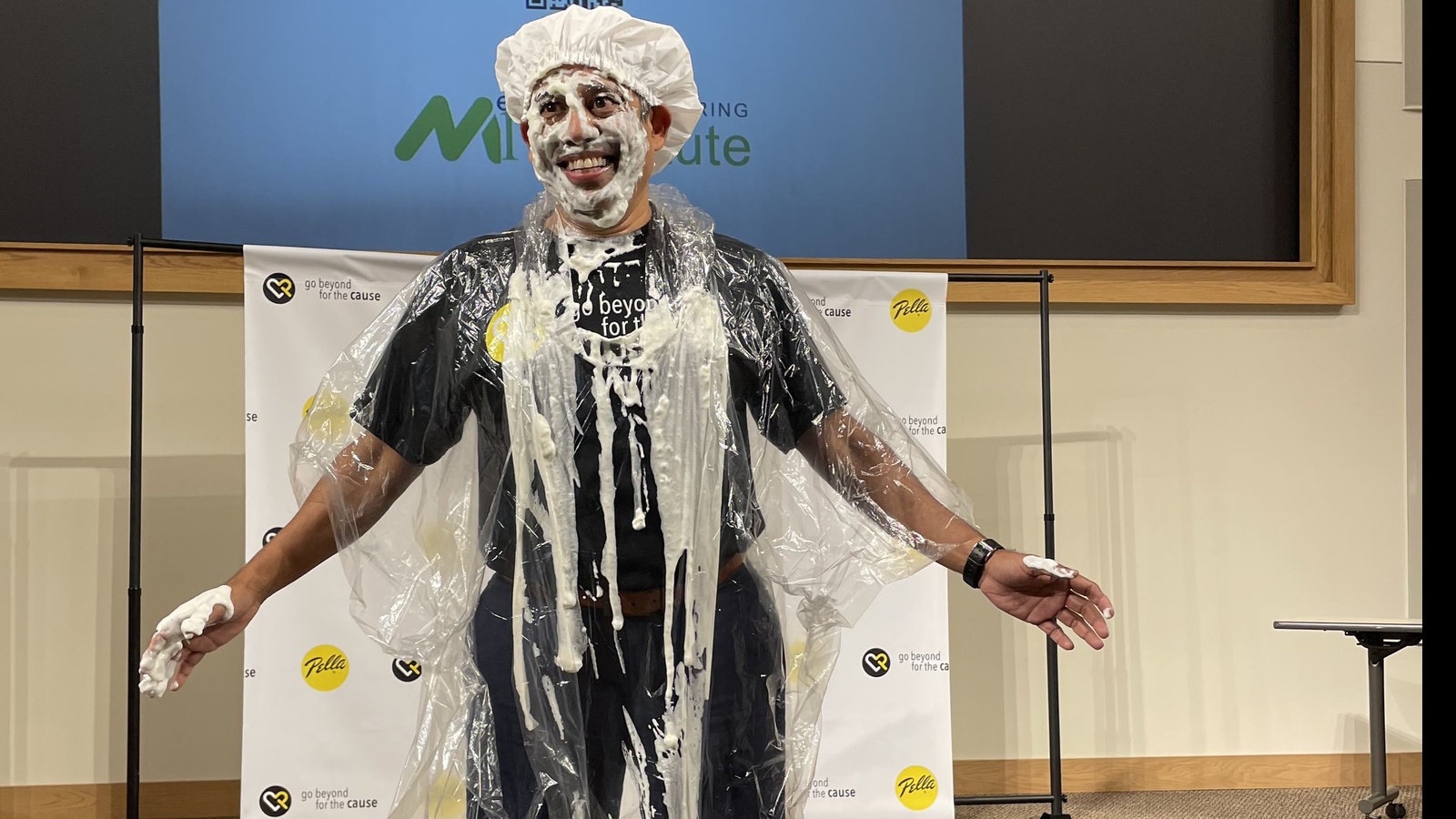
Few C-suite job descriptions include being smeared with baked goods, but for Pella’s Joher Akolawala, getting a pie in the face last November was just another day in the life—and another step toward broadening the diversity, equity and inclusion conversation among employees.
Dessert for diversity: “The main event at our Day of Giving was a livestream of executives doing a pie-baking competition,” explained Pella Senior Digital Talent Brand Strategist Kolbie Creger, who leads a DE&I-related employee committee at the Iowa-based window and door manufacturer. Pella’s Go Beyond for a Cause committee focuses on rallying team members around DE&I efforts within their walls and communities through education and engagement opportunities.
- “Team members donated [money] into each executive’s pie tin, and the one with the most money in their bucket got a pie in the face. It ended up being our CFO [Akolawala], who was a great sport about it.”
“Fun raising”: So, what do pies have to do with diversity? Pella’s 2021 “Pie in the Face” and other activities during the company’s first annual Day of Giving raised $17,000 in 24 hours for diversity-focused education efforts for partner philanthropies, including the nonprofit organization Facing History and Ourselves, Creger said.
- Team members on Pella factory floors nationwide got in on the fun, with each manufacturing site getting to “pie” department managers, bid on auction items and compete to raise money for DE&I efforts.
- In total, across myriad fundraising efforts, Pella donated more than $90,000 to DE&I initiatives in 2021.
“GIVE IT UP”: Last year, Creger’s team, the Go Beyond Committee, which is currently at work organizing 2022’s dedicated, daylong DE&I effort, asked Pella employees to each give up a small daily “guilty pleasure” purchase of their choice.
- “It could be a coffee, a fast-food meal or an [overpriced] Diet Coke,” Creger said. “We asked them to take that money and instead donate it” to one of Pella’s DE&I partner philanthropies.
- “It’s just about continuing to layer in the larger ‘Why?’ in all of our communication,” Creger continued. “We are the boots on the ground trying to create engagement. Our main focus is just meeting people where they are in their DE&I journey, creating spaces where we can have conversations.”
This year: In 2022, Pella’s DE&I-focused events will be fewer but hopefully even more effective.
- Among the planned activities are lunch-and-learn sessions and a months-long bingo-like challenge that lets employees track everyday positive behaviors, such as thanking a coworker or donating the amount of a “give-up” item.
- At the end of the challenge, Pella will match employee donations.
The last word: “We’ve learned some people like to track their progress, those day-to-day achievements, whereas some people would rather absorb content in a lunch-and-learn or partake in an activity,” Creger said.
“We know our people are unique, and there is no one-size-fits-all approach, so we do our best to create diversity in our outreach. Inclusion to Pella means our people feel comfortable showing up to work as their authentic self and belong as a valued team member. That intent holds true no matter our approach. We aim to get that message right each time, and let the rest vary.”
“The Best Thing I Ever Did”: Creators Wanted Stops in Louisiana
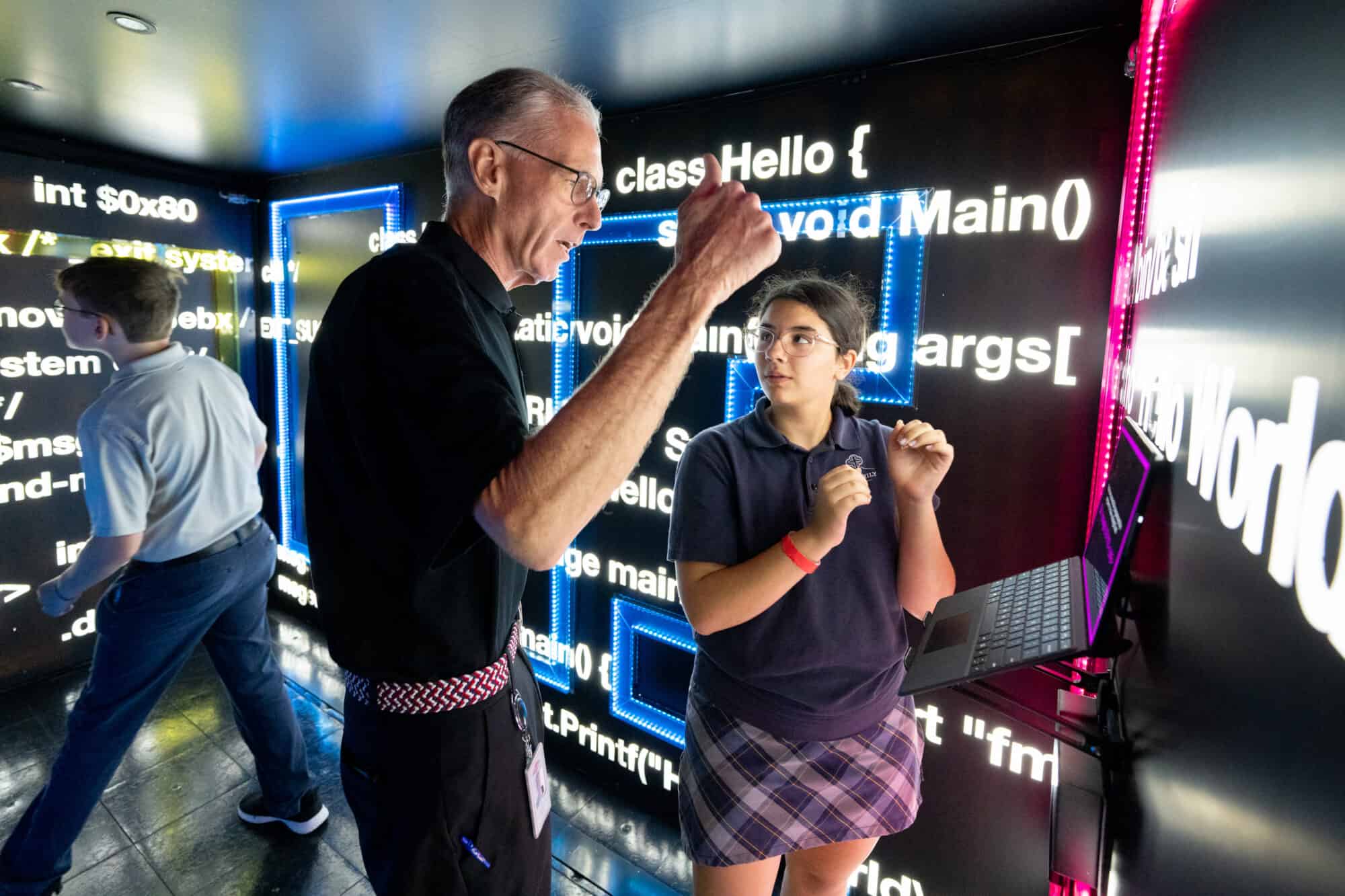
It was the 14th stop of the Creators Wanted Tour, but the level of enthusiasm among attendees made it seem like the first.
What happened: This week’s visit of the award-winning mobile immersive experience—an initiative of the NAM and its 501(c)3 workforce development and education affiliate, the Manufacturing Institute—to the Baton Rouge, Louisiana, area was an unequivocal hit.
- Hosted by Dow with the participation of Union Pacific, the Louisiana Association of Business and Industry, FactoryFix, River Parishes Community College and BASF, the event drew more than 500 students to the college’s Westside Campus in Plaquemine, Louisiana. Students came from the college as well as area middle and high schools.
- The digital campaign signed up more than 26,000 new students and career mentors in Louisiana to learn more about modern manufacturing. In addition, Dow (a third-time Creators Wanted host) and Union Pacific had team members on-site to answer students’ questions about their careers.
High tech: Dow displayed drones and robots—including one named Spot—to give students a peek at some of the cutting-edge technologies they might expect to work with in manufacturing. Meanwhile, Union Pacific offered 3D virtual tours of company operations.
Manufacturing is everywhere: River Parishes Community College Chancellor Quintin D. Taylor, who gave opening remarks at the kickoff event, emphasized the extent to which manufacturing touches everyone each day—and how fulfilling a career in it can be.
- “Even the toothpaste we all used this morning was made in a facility that does manufacturing,” Taylor said. “Should a time come in your life where you decide to have a family, you have to be gainfully employed to take care of your family. Manufacturing is just one of many careers, quite frankly, that can help you do that.”
“Be somebody big”: Union Pacific Executive Vice President of Marketing and Sales Kenny Rocker seconded that sentiment.
- “Who wants to make the world better and make a lot of money doing it?” Rocker asked the audience to a show of numerous hands. With a manufacturing career, “you can be the GOAT in your family,” he continued, referring to the acronym meaning “Greatest of All Time.” “You can be somebody big in your family.”
- Stay tuned: Union Pacific will host a Creators Wanted stop in the Minneapolis–St. Paul area in the fall.
Creators required: There’s an acute need for more workers in manufacturing, MI President and Executive Director Carolyn Lee said, and there’s something in it for everyone.
- “I can promise you if you are interested in designing, building, solving, creating things, fixing things with your hands, just figuring stuff out, there is a home for you in manufacturing,” she said.
- Lee cited research by the MI and Deloitte that found if current trends continue, manufacturers will need to fill some 4 million jobs by the end of this decade.
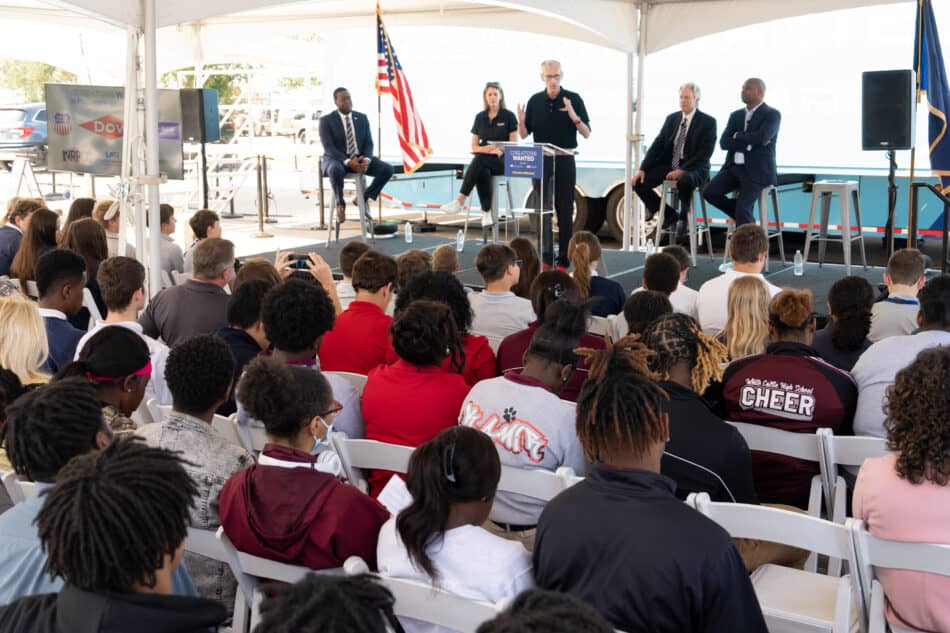
Autograph-worthy: Attendees were so inspired by the kickoff-event remarks of Dow Chairman and CEO (and NAM Board Chair) Jim Fitterling—who spoke about students’ opportunities to do something historic in their careers—that several requested his autograph.
- “The world’s going through one of the biggest changes since we industrialized the United States,” said Fitterling, who along with NAM President and CEO Jay Timmons wrote an op-ed about the tour that appeared in the Louisiana Policy Review this week.
- “We’re about to go through another … massive change because we’re going to reindustrialize this country. And that means you are going to get to work on some of the biggest projects that we have ever seen in the world.”
- Fitterling, who personally took students through the Creators Wanted immersive experience before his talk, emphasized, “We’re here to see you. We’re interested in you. We want you to have a great future, and we want you to have … opportunities.”
“I’m still having fun”: Panel discussions featured leaders and team members from Dow as well as Turner Industries, giving students a more in-depth perspective about modern manufacturing careers.
- During an on-stage discussion with Fitterling, Dow Senior Lead Site Manufacturing Director Crystal King told the audience how she came to choose engineering: her mother chose it for her.
- “When I was in 10th grade, my mom asked me what did I want to do,” King said. She had said she wanted to go into education because her mother was a teacher. Then her mother “explained that when she went to college, there were only two things that, as an African-American female, she could be. One was a teacher, and one was a nurse. And I needed to do something other than either one of the two of them.”
- Despite thinking she “would hate” being an engineer, King loved it—and she still loves it. “This is the best job in the world,” she told the audience. “I tease Jim [Fitterling]—I say, ‘When I stop having fun, I’m going home.’ I’m still having fun.”
The reception: In addition to a student who was “left … speechless” by the week’s events and another who called Creators Wanted “the best thing I ever did,” the tour stop had social media abuzz with praise for the initiative:
- “Thank you to #CreatorsWanted for hosting our students over the past two days,” tweeted White Castle High School. “The students had a great time learning and building excitement about modern manufacturing careers.”
- “Our Juniors and Seniors are having a fantastic time at #creatorswanted today!” tweeted Plaquemine High School. “They’re expanding their knowledge of the manufacturing industry and workforce, while also getting a chance to tour RPCC. A big thank you to #Creatorswanted, Dow and RPCC for this opportunity!”
Coming up: Creators Wanted will travel to Marysville and Columbus, Ohio, next week for stops at the Honda Heritage Center and the COSI Science Festival, sponsored by Honda. Later in May, the tour goes to the Indy 500 in Indianapolis.
Creators Wanted in action: See here, here and here for exciting footage of this week’s tour stop, including the remarks of LABI Interim President and CEO Jim Patterson.
Winton Machine CEO: Changes “Are Like a Tax on Manufacturing Growth”
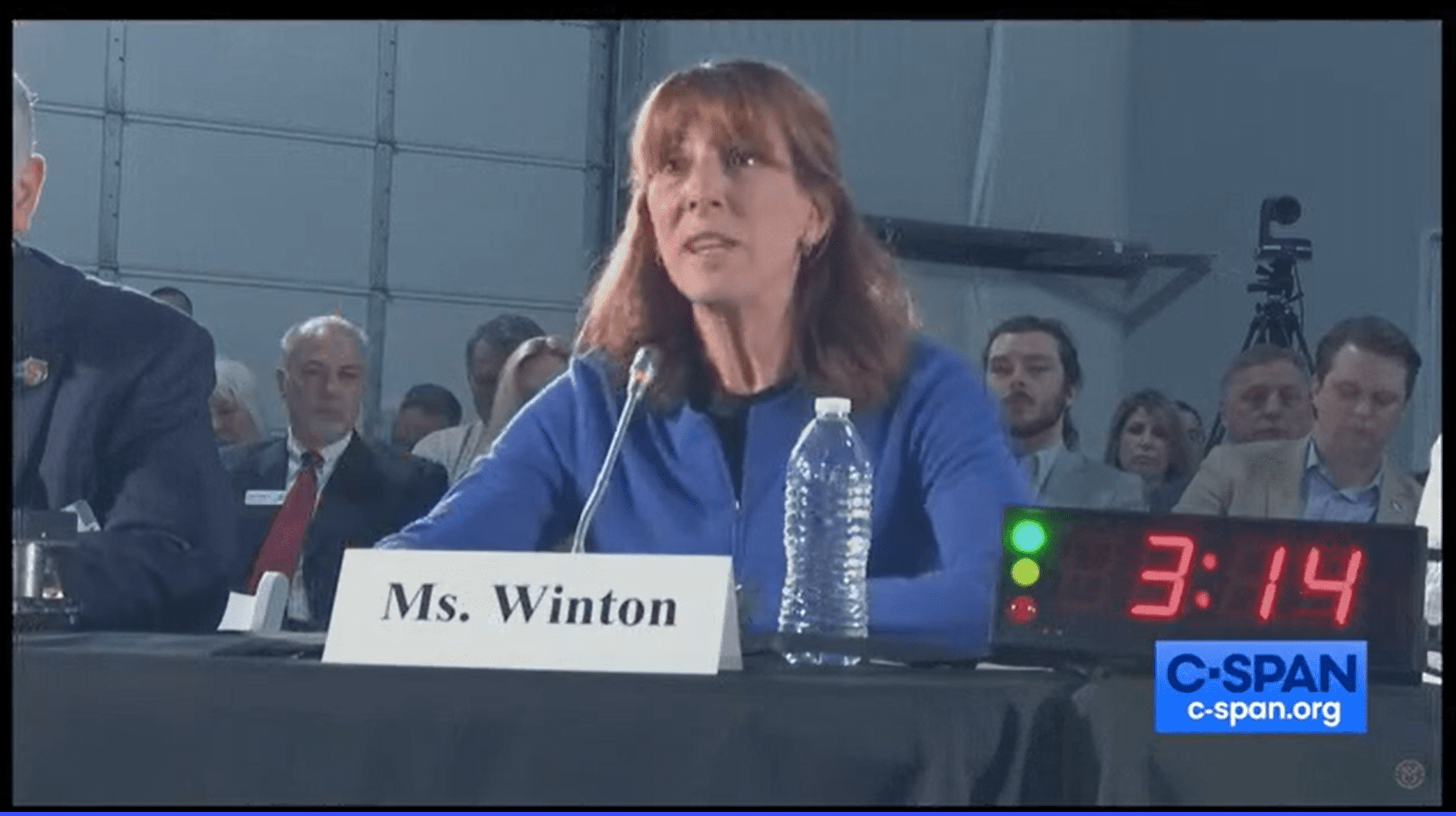
Recent changes to the U.S. tax code are threatening manufacturers’ continued success—and they need to be reversed now, Winton Machine Company CEO and NAM board member Lisa Winton told U.S. lawmakers at a recent hearing.
What’s going on: Winton, whose 25-year-old company designs and manufactures machines used in tubular part and coaxial cable fabrication, testified before the House Ways and Means Committee at a hearing last Friday on the state of the American economy.
- Winton spoke about the challenges facing manufacturers and highlighted the impact of two recent changes to the tax code that increase the cost of financing machinery purchases: the phaseout of immediate expensing and limitations on deductions for interest on business loans.
- “While I would like to double the size of my facility, the cost of doing so has risen fourfold over the last several years,” said Winton, whose business is one of approximately 244,000 small manufacturers in the U.S.
Why it’s important: “These changes are like a tax on manufacturing growth,” Winton said.
- Winton expressed concern that “these changes will force our customers to keep using older pieces of equipment, rather than purchasing newer or additional ones, or they will buy cheaper equipment from Asia.”
- In addition to these two harmful changes, Winton spoke about another recent revision requiring businesses to deduct or amortize their R&D expenses over a period of years. This makes R&D more expensive because businesses “can [now] only recover a small portion of those costs each year.”
- In sharp contrast to this treatment, China currently allows a “super deduction” for manufacturers, Winton noted.
More to come: There are more harmful changes on the way. The 20% pass-through deduction is set to expire in 2025, “at the same time that tax rates for pass-through entities like ours go up across the board,” Winton said.
- In addition, a scheduled change to the estate tax could force family-owned businesses to sell off pieces of their companies.
The last word: “None of these tax changes are fair to our employees, their families [or] our communities,” she said. “We need to fix them so we’re not making it harder to do business in America.”